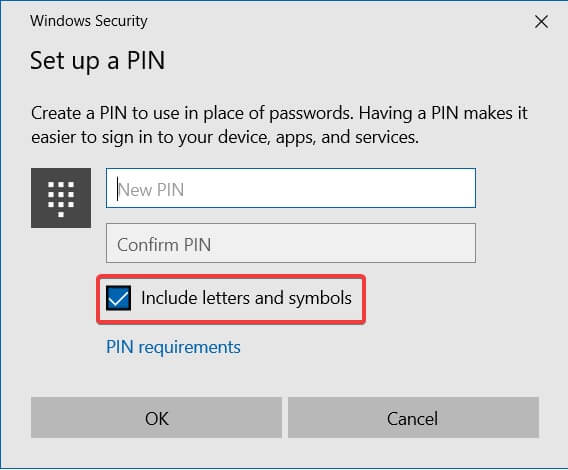

- #WINDOWS ASKING FOR PASSWORD BUT ONLY HAVE PIN HOW TO#
- #WINDOWS ASKING FOR PASSWORD BUT ONLY HAVE PIN WINDOWS 10#
- #WINDOWS ASKING FOR PASSWORD BUT ONLY HAVE PIN WINDOWS#
Prepare your devices for Windows 11 by enabling Secure Boot and Firmware TPM 2 comments | 34.92 views per day | by Janusz | posted on June 28, 2021.Autopilot Reset – What does it do? How is it different? 24 comments | 36.27 views per day | by Janusz | posted on August 9, 2019.Enable Audio and Video Redirection for Windows Virtual Desktop 12 comments | 48.66 views per day | by Janusz | posted on March 20, 2020.
#WINDOWS ASKING FOR PASSWORD BUT ONLY HAVE PIN HOW TO#
How to disable the “Your organization requires Windows Hello” prompt during OOBE 28 comments | 148.49 views per day | by Janusz | posted on September 17, 2020.RUNDL元2.EXE USER32.DLL, UpdatePerUserSystemParameters 1, True New-ItemProperty -Path $RegKeyPath -Name $PassportEnabled -Value $StatusOn -PropertyType DWORD -Force | Out-Null New-ItemProperty -Path $RegKeyPath -Name $PassportPostLogon -Value $StatusOn -PropertyType DWORD -Force | Out-Null #PassportPostLogon: StatusOn = Windows Hello for Business prompts post Windows login, StatusOff = Windows Hello will prompt


#PassportEnabled: StatusOn = Windows Hello enabled, StatusOff = Windows Hello disabled

New-Item -Path $RegKeyPath -Force | Out-Null Write-Host “Creating registry path $($RegKeyPath).” $PassportPostLogon = “DisablePostLogonProvisioning” $RegKeyPath = “HKLM:\SOFTWARE\Policies\Microsoft\PassportForWork” Here is what I use (can’t find original source to credit, sorry!): This still allows the user to use Windows Hello if they like. If you’re using Intune you can deploy a power shell script to set this registry key automatically. Hi, as Ed pointed out above there is a registry edit that will prevent the Windows Hello prompt from showing up during autopilot. Have any questions? Comment below! And as always, happy deploying! 🚀 When a user selects the option to join a work or school network, the device is automatically joined to the Office 365 tenant’s directory partition, a certificate is issued for the device, and it becomes eligible for Office 365 MDM if the tenant has subscribed to that feature.” This basically results in Hello for Business, which is default to enabled, automatically working and being “required” (although you could still skip it by pressing the X in the top right corner during OOBE).
#WINDOWS ASKING FOR PASSWORD BUT ONLY HAVE PIN WINDOWS 10#
According to this docs article, for organizations that use Azure AD as part of O365: “When Windows 10 was released to general availability, Microsoft changed the behavior of the Office 365 Azure AD stack. You may also be wondering why the prompt shows up at all when you haven’t set anything up before, it seems it’s because of Azure AD and Office 365. So if you want to remove the Hello for Business prompt during OOBE (for Autopilot, for example), you would have to block it for everyone using the tenant wide setting. Unfortunately, these settings also apply to the entire tenant and can’t be scoped. Now, there are other locations you can edit the Hello for Business settings – like the Endpoint Security pane in MEM (using security baselines or configuration profiles), but the settings in the Windows Enrollment pane are the only ones that apply during OOBE. Here’s a sped up gif showing how OOBE looks without the prompt: OOBE Gif Click save and that’s it! During OOBE, you’ll now skip the “Your organization requires Windows Hello” prompt automatically.


 0 kommentar(er)
0 kommentar(er)
